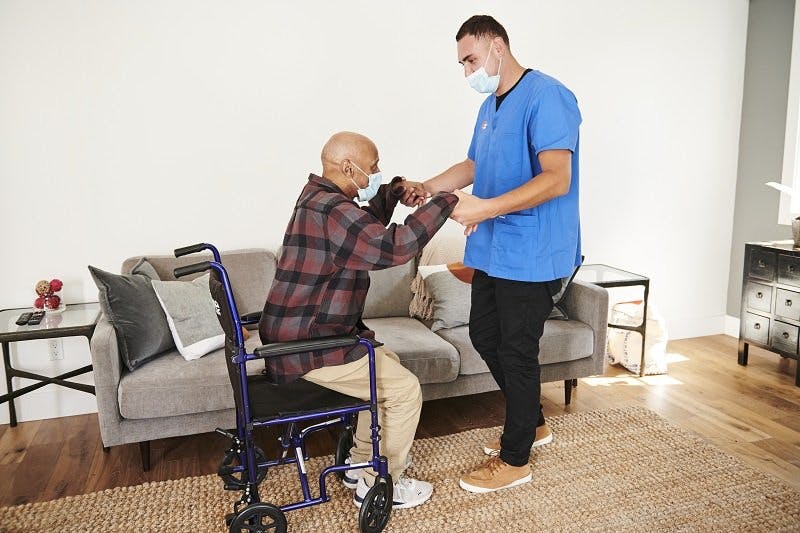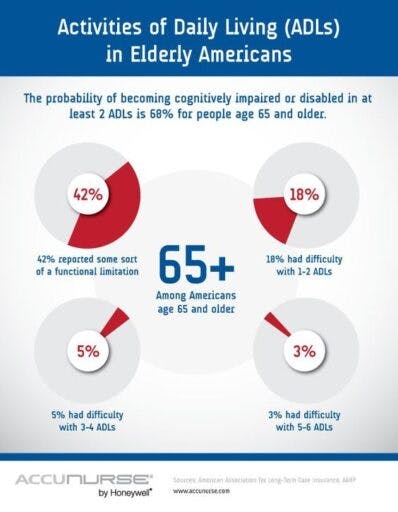What's the Difference Between ADLS vs. IADLS?
Doctors and healthcare professionals know the definition of IALDs and ADLs when it comes to caring for aging individuals. Do you? As elderly …

Doctors and healthcare professionals know the definition of IALDs and ADLs when it comes to caring for aging individuals. Do you?
As elderly adults age, it becomes crucial to discover whether they’re having any issues with functional living that make the management of their health issues worse. ADLs and IADLS are both qualitative and quantitative in nature. They can help you assess the level of care seniors may need as they age.
Most family caregivers should be familiar with both terms because measuring the two can help them identify where and when they may need extra help in daily living.
Unless you work in the home care industry or have family members placed in an assisted living community, the difference between ADLs and IADLS might still be confusing. This article will help you be aware of both types of daily living activities that you can (and should) be tracking when assessing your loved one’s health as they age.
What are ADLS?
ADLS (Activities of Daily Living) are activities of daily living that cover someone’s basic physical needs. They’re a good indicator of how “functional” someone is when performing these tasks.
Below is a shortlist of tasks referred to as Basic Activities of Daily Living (BADLs):
- Walking — Move from one place to another using their legs; also called “ambulating.”
- Bathing — Wash face and body in the tub or shower.
- Dressing — Put on clothes and manage one’s appearance via grooming, i.e., combing of hair.
- Feeding — Consuming meals from plate to mouth using proper utensils.
- Toileting — Going to and from the toilet to clean oneself.
- Transfering — Moving the body from one position to another (not necessarily just walking).
The ADLs scale is a specific way people assess how dependent they are on others for these basic self-care activities.
For example, if they can’t bathe themselves independently, they will require assistance from personal care services for their bathing and grooming needs.
What are IADLs?
An IADL (Instrumental Activities of Daily Living) comprises more complex activities that require thinking and organizational skills from an individual. Below are examples of things that are IADLs, including:
- Finances — Paying bills and managing financial assets and properties.
- Transportation — Operating a vehicle to get from one location to another.
- Running errands — Grocery shopping, picking up items, meal preparation, et al.
- Home maintenance and housekeeping — Cleaning dishes after eating, keeping the house under reasonable living conditions.
- Communication — Talking to someone via telephone, mail, or any device.
- Medication — Obtaining medications and taking them as prescribed.
As you can see, these are important life details that need monitoring, and people who have trouble performing these tasks due to their health will need care and assistance from caregivers. This could be from a professional like a certified nursing assistant, who can help with health needs completing life routines.
How Do ADLs Differ from IADLs?
To start, ADLs and IADLs are used by geriatricians to determine the type of senior care your loved one should receive from professionals providing in-home care.
That said, ADLs are more focused on the tasks of daily living. Since these tasks don’t require cognition and critical thinking, they can be used to determine people in need of dementia care.

Source: Pinterest
IADLs, on the other hand, are more focused on the performance of tasks. As a result, they can be used as a clinical measure for people with significant cognitive impairment.
Professionals or therapists require an interactive response from a person while performing a task under Instrumental Activities of Daily Living. Patients who have difficulty performing IADLs are deemed mildly cognitive impaired (MCI) individuals, which could be the precursor to dementia.
Ultimately, the difference between ADLs and IADLs boils down to each person’s evaluations. For example, a clinician will use their judgment when gauging someone who has significant memory impairment such as dementia by observing if they perform certain types of activities.
Also, how one performs based on these tasks can affect one’s health policy. For example, those with severe cognitive impairment can expect to receive more financial relief to help with their living expenses.
How to Assess ADLs and IADLs?
There are different ways to determine the degree of cognitive or physical loss adults have endured during this period.
If aging adults aren’t relying on staff observations in an assisted living facility, self-reporting from loved ones, instead of from a healthcare team, is the best source of information. However, due to a lack of clinical training, your observations as a family member are still open to different interpretations.
Ideally, staff from nursing homes are qualified enough to provide better medical information about the patient’s health and wellbeing. But, unfortunately, burnout and stress experienced by even the most skilled nursing team could taint their observations as well, making the information less reliable over time.
That’s why reports from caregivers remain the ideal source of patient assessment — and why it’s so crucial for you to track these activities. Your observations are valuable and valid as long as any of the tools below supplements them:
- The Functional Independence Measure (FIM) — Aside from covering IADLs/ADLs, this tool also covers various diagnoses to identify a patient’s response to treatment.
- The Katz Index of Independence in Activities of Daily Living — The best tool to use for assessing patients in long-term care.
- The Barthel ADL Index — Ideal for patients under intensive care as it’s better in picking up small changes in patients’ ability.
Conclusion
Eventually, your loved ones will need day-to-day assistance because their physical, mental, and emotional needs will change as they age.
To take advantage of the benefits of senior home care, reach out to a home care service provider, and have your loved one assessed according to ADLs and IADLS.
We at 24 Hour Home Care can provide aging adults with the relief they need, especially if they have difficulties performing ADLs or IADLS. Our services offer assisted living and home care needs from meal preparation to transportation.
And with our professional caregivers with years of experience under their belt, you can have peace of mind that your loved ones thrive in their everyday lives. Learn more about how 24 Hour Home Care can help you and your family.
